Podcast: Play in new window | Download
Subscribe: Apple Podcasts | Email | TuneIn | RSS
This episode Megan & Milena cover English chemist and molecular biologist Rosalind Franklin & painter Romaine Brooks, an American expat in France.
Rosalind Franklin
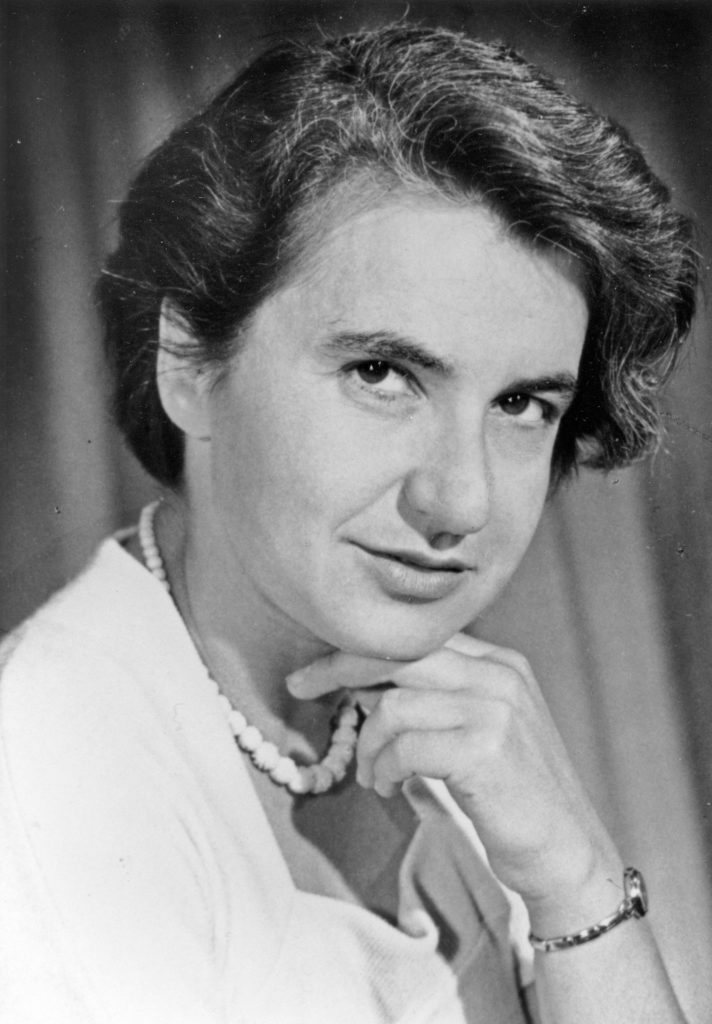
As always, we start with writing these shownotes at 11pm on the night that the Episode is published. As well, we always start with a portrait. Say hello to her face, ladies and gentlemen.

The cool stuff now. Above is the crystallography Xray defraction of DNA that led to the discovery of its structure. People had no idea what the code of all of life looked like, and this was the first clue.
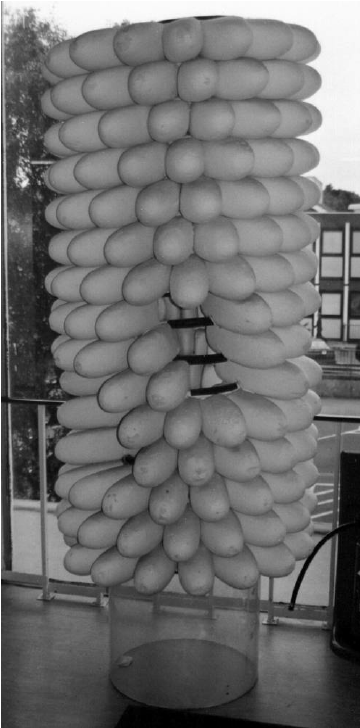
When she was done with DNA, Franklin moved on to Viruses and their structures. Because she got funding from an agricultural institute, it was to study viruses that specifically targeted plants. Franklin worked mostly on the structure of the Tobacco Mosaic Virus, which she created a 5 foot model of to exhibit at the International Exhibit in Brussels in 1958. She unfortunately was not able to see the exhibit, as she passed away the day before it opened. But her work on viruses led to the Nobel Prize Winning Science.

Franklin got plenty of recognition posthumously. Above, we see a google doodle that Megan wouldn’t even click on [I might be shaming her a little bit]. Below, I literally just copied and pasted from her wiki page. (UGGGH Milena we’re better than Wiki) Enjoy
- 1982, Iota Sigma Pi designated Franklin a National Honorary Member.
- 1992, English Heritage placed a blue plaque commemorating Franklin on the building in Drayton Gardens, London, where she lived until her death.[222][223]
- 1993, King’s College London renamed the Orchard Residence at their Hampstead Campus as Rosalind Franklin Hall.[224]
- 1993, King’s College London placed a blue plaque on its outside wall bearing the inscription: “R. E. Franklin, R. G. Gosling, A. R. Stokes, M. H. F. Wilkins, H. R. Wilson – King’s College London – DNA – X-ray diffraction studies – 1953.”[225]
- 1995, Newnham College, Cambridge opened a graduate residence named Rosalind Franklin Building[226] and put a bust of her in its garden.[227][228]
- 1997, Birkbeck, University of London School of Crystallography opened the Rosalind Franklin Laboratory.[229]
- 1997, the asteroid discovered in 1997 was named 9241 Rosfranklin.
- 1998, National Portrait Gallery in London added Rosalind Franklin’s portrait next to those of Francis Crick, James Watson and Maurice Wilkins.[230]
- 1999, the Institute of Physics at Portland Place, London, renamed its theatre as Franklin Lecture Theatre.[231]
- 2000, King’s College London opened the Franklin–Wilkins Building in honour of Franklin’s and Wilkins’s work at the college.[232]
- 2001, the American National Cancer Institute established the Rosalind E. Franklin Award for women in cancer research.[233]
- 2002, the University of Groningen, supported by the European Union, launched the Rosalind Franklin Fellowship to encourage women researchers to become full university professors.[234][235]
- 2003, the Royal Society established the Rosalind Franklin Award (officially the Royal Society Rosalind Franklin Award and Lecture) for an outstanding contribution to any area of natural science, engineering or technology.[236] The award consists of a silver-coated medal and a grant of £30,000.[237]
- 2003, the Royal Society of Chemistry declared King’s College London as “National Historic Chemical Landmark” and placed a plaque on the wall near the entrance of the building, with the inscription: “Near this site Rosalind Franklin, Maurice Wilkins, Raymond Gosling, Alexander Stokes and Herbert Wilson performed experiments that led to the discovery of the structure of DNA. This work revolutionised our understanding of the chemistry behind life itself.”[238]
- 2004, Finch University of Health Sciences/The Chicago Medical School, located in North Chicago, Illinois, USA changed its name to the Rosalind Franklin University of Medicine and Science.[239] It also adopted a new motto “Life in Discovery”, and Photo 51 as its logo.[240]
- 2004, the Gruber Foundation started the Rosalind Franklin Young Investigator Award for two female geneticists from all over the world. It carries an annual fund of $25,000, each award is for three years, and selection is made by a joint committee appointed by the Genetics Society of America and the American Society of Human Genetics.[241]
- 2004, the Advanced Photon Source (APS) and the APS Users Organization (APSUO) started the APSUO Rosalind Franklin Young Investigator Award for young scientists who made contributions through the APS.[242]
- 2005, the DNA sculpture (donated by James Watson) outside Clare College, Cambridge’s Memorial Court incorporates the words “The double helix model was supported by the work of Rosalind Franklin and Maurice Wilkins.”[243]
- 2006, the Rosalind Franklin Society was established in New York by Mary Ann Liebert.[244][245] The Society aims to recognise, foster, and advance the important contributions of women in the life sciences and affiliated disciplines.[246]
- 2008, Columbia University awarded an honorary Louisa Gross Horwitz Prize to Franklin, “for her seminal contributions to the discovery of the structure of DNA”.[247]
- 2008, the Institute of Physics established a biennual award the Rosalind Franklin Medal and Prize.[248]
- St Paul’s Girls School established the Rosalind Franklin Technology Centre.[25]
- 2012, the bioinformatics education software platform Rosalind is named in honour of Franklin.[249]
- 2012, The Rosalind Franklin Building is opened at Nottingham Trent University.[250]
- 2013, Google honoured Rosalind Franklin with a doodle, showing her gazing at a double helix structure of DNA with an X-ray of Photo 51 beyond it.[251][252]
- 2013, a plaque was placed on the wall of The Eagle pub in Cambridge commemorating Franklin’s contribution to the discovery of the structure of DNA, on the sixtieth anniversary of Crick and Watson’s announcement in the pub.[253][254]
- 2014, the Rosalind Franklin Award for Leadership in Industrial Biotechnology was established by Biotechnology Industry Organization in collaboration with the Rosalind Franklin Society, for an outstanding woman in the field of industrial biotechnology and bioprocessing.[255]
- 2014, the Rosalind Franklin University of Medicine and Science unveiled a bronze statue of Franklin, created by Julie Rotblatt-Amrany, near its front entrance.[256]
- 2014, the Rosalind Franklin STEM Elementary was opened in Pasco, Washington, the first science, technology, engineering, and math (STEM) elementary school in the district.[257][258]
- 2014, the University of Wolverhampton opened its new laboratory building named the Rosalind Franklin Science Building.[259][260]
- 2015, Newnham College Boat Club, Cambridge, launched a new racing VIII, naming it the Rosalind Franklin[261]
- 2015, the Rosalind Franklin Appathon was launched by University College London as a national app competition for women in STEMM (science, technology, engineering, maths and medicine).[262]
- 2015, a high performance computing and cloud facility in London was named Rosalind.[263]
- 2016, the British Humanist Association added the Rosalind Franklin Lecture to its annual lecture series, aimed to explore and celebrate the contribution of women towards the promotion and advancement of humanism.[264]
- 2016, the Rosalind Franklin Prize and Tech Day was held on 23 February in London, organised by University College London, i-sense, UCL Enterprise, the London Centre for Nanotechnology and the UCL Athena Swan Charter.[265]
- 2017, DSM opened the Rosalind Franklin Biotechnology Center in Delft, the Netherlands.[266]
- 2017, the Historic England listed the tomb of Franklin under the Planning (Listed Buildings and Conservation Areas) Act 1990 as a “special architectural or historic interest”. Official description states that “the tomb commemorates the life and achievements of Rosalind Franklin, a scientist of exceptional distinction, whose pioneering work helped lay the foundations of molecular biology; Franklin’s X-ray observation of DNA contributed to the discovery of its helical structure.”[267]
- 2019, the European Space Agency (ESA) named their ExoMars rover Rosalind Franklin.[268]
- 2004, Finch University of Health Sciences/The Chicago Medical School, located in North Chicago, Illinois, USA changed its name to the Rosalind Franklin University of Medicine and Science.[239] It also adopted a new motto “Life in Discovery”, and Photo 51 as its logo.[240]
- 2004, the Gruber Foundation started the Rosalind Franklin Young Investigator Award for two female geneticists from all over the world. It carries an annual fund of $25,000, each award is for three years, and selection is made by a joint committee appointed by the Genetics Society of America and the American Society of Human Genetics.[241]
- 2004, the Advanced Photon Source (APS) and the APS Users Organization (APSUO) started the APSUO Rosalind Franklin Young Investigator Award for young scientists who made contributions through the APS.[242]
- 2005, the DNA sculpture (donated by James Watson) outside Clare College, Cambridge’s Memorial Court incorporates the words “The double helix model was supported by the work of Rosalind Franklin and Maurice Wilkins.”[243]
- 2006, the Rosalind Franklin Society was established in New York by Mary Ann Liebert.[244][245] The Society aims to recognise, foster, and advance the important contributions of women in the life sciences and affiliated disciplines.[246]
- 2008, Columbia University awarded an honorary Louisa Gross Horwitz Prize to Franklin, “for her seminal contributions to the discovery of the structure of DNA”.[247]
- 2008, the Institute of Physics established a biennual award the Rosalind Franklin Medal and Prize.[248]
- St Paul’s Girls School established the Rosalind Franklin Technology Centre.[25]
- 2012, the bioinformatics education software platform Rosalind is named in honour of Franklin.[249]
- 2012, The Rosalind Franklin Building is opened at Nottingham Trent University.[250]
- 2013, Google honoured Rosalind Franklin with a doodle, showing her gazing at a double helix structure of DNA with an X-ray of Photo 51 beyond it.[251][252]
- 2013, a plaque was placed on the wall of The Eagle pub in Cambridge commemorating Franklin’s contribution to the discovery of the structure of DNA, on the sixtieth anniversary of Crick and Watson’s announcement in the pub.[253][254]
- 2014, the Rosalind Franklin Award for Leadership in Industrial Biotechnology was established by Biotechnology Industry Organization in collaboration with the Rosalind Franklin Society, for an outstanding woman in the field of industrial biotechnology and bioprocessing.[255]
- 2014, the Rosalind Franklin University of Medicine and Science unveiled a bronze statue of Franklin, created by Julie Rotblatt-Amrany, near its front entrance.[256]
- 2014, the Rosalind Franklin STEM Elementary was opened in Pasco, Washington, the first science, technology, engineering, and math (STEM) elementary school in the district.[257][258]
- 2014, the University of Wolverhampton opened its new laboratory building named the Rosalind Franklin Science Building.[259][260]
- 2015, Newnham College Boat Club, Cambridge, launched a new racing VIII, naming it the Rosalind Franklin[261]
- 2015, the Rosalind Franklin Appathon was launched by University College London as a national app competition for women in STEMM (science, technology, engineering, maths and medicine).[262]
- 2015, a high performance computing and cloud facility in London was named Rosalind.[263]
- 2016, the British Humanist Association added the Rosalind Franklin Lecture to its annual lecture series, aimed to explore and celebrate the contribution of women towards the promotion and advancement of humanism.[264]
- 2016, the Rosalind Franklin Prize and Tech Day was held on 23 February in London, organised by University College London, i-sense, UCL Enterprise, the London Centre for Nanotechnology and the UCL Athena Swan Charter.[265]
- 2017, DSM opened the Rosalind Franklin Biotechnology Center in Delft, the Netherlands.[266]
- 2017, the Historic England listed the tomb of Franklin under the Planning (Listed Buildings and Conservation Areas) Act 1990 as a “special architectural or historic interest”. Official description states that “the tomb commemorates the life and achievements of Rosalind Franklin, a scientist of exceptional distinction, whose pioneering work helped lay the foundations of molecular biology; Franklin’s X-ray observation of DNA contributed to the discovery of its helical structure.”[267]
- 2019, the European Space Agency (ESA) named their ExoMars rover Rosalind Franklin.[268]
Romaine Brooks
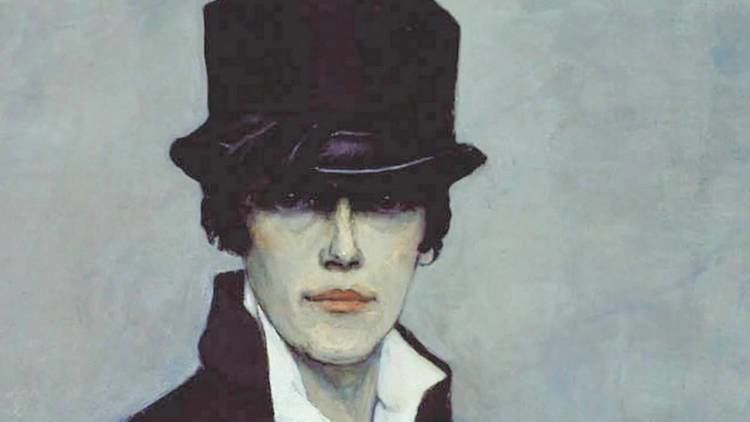
Sometimes life doesn’t go as planned.
Sometimes life gives you an alcoholic father and a narcissistic mother and a special needs brother and a sister who elopes and leaves the country. And years later you’re trapped in Italy, fearing the fascists and the Nazis, wondering how did I get here? But hey, on the upside you’re with your partner – who only reveals later they’ve been cheating on you for close to a decade. And yeah, things might seem bad – but you’ve got dying alone to look forward too. Oh, and the Smithsonian declaring the world’s finally ready for your art, decades after the fact.
Too depressing? Too bad, that’s all reality for this episode’s artist, lesbian painter Romaine Brooks. Overall, Romaine is a complicated figure – she didn’t have a neat and tidy life like other artists we’ve covered, but fortunately she gained the means to make art on her own terms. So tune in and fear not! It’s not too depressing…really…
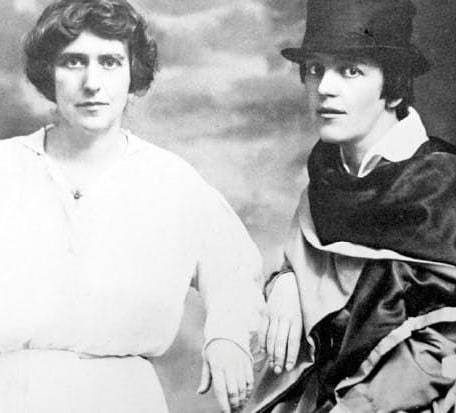
Selected Art




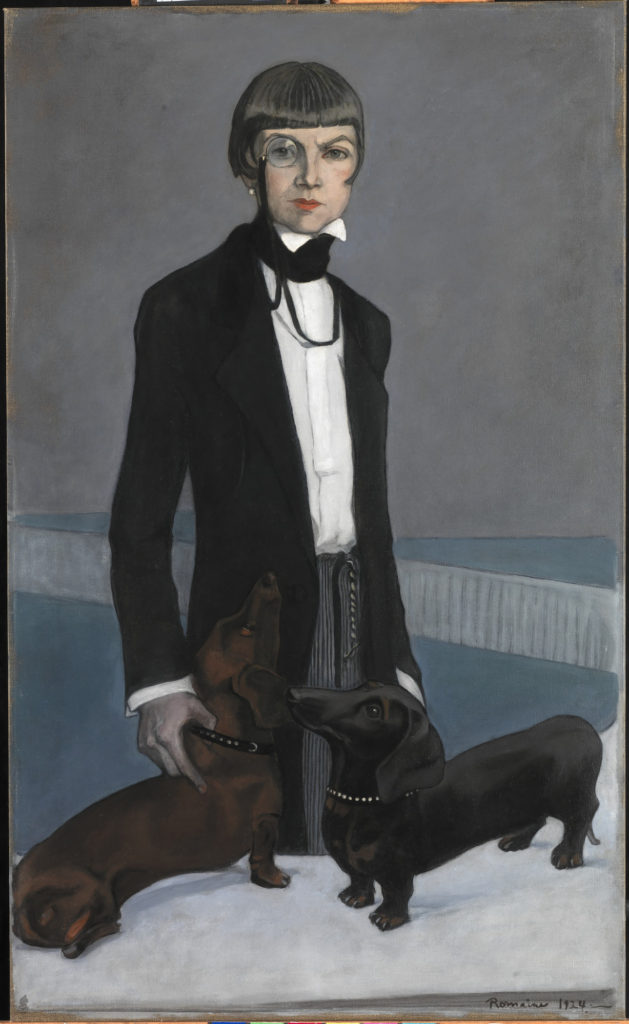
- Ellingham Brooks – English high society, gay pianist and classical scholar who Romaine married in 1902
- Lady Una Troubridge – upper class friend of Romaine who she painted, partner to Radclyffe Hall who wrote The Well of Loneliness
- Mary Cassatt – Contemporary painter to Romaine, also an American living in Paris and essentially the exact opposite of Romaine
- Princess Edmond de Polignac, nee Winnaretta Singer – American heiress to the Singer Sewing Machine company who Romaine fell for, then bickered over the Princess’s gay husband, who she’d steal women away from. Fun times
- Ida Rubinstein – Russian ballerina who was one of those women Romaine would ‘steal’, acted as her muse for a few years
- Natalie Clifford Barney – the woman Romaine fell hard for, her and Natalie had a at-times rocky relationship of over 50 years together
As always, music by EeL
